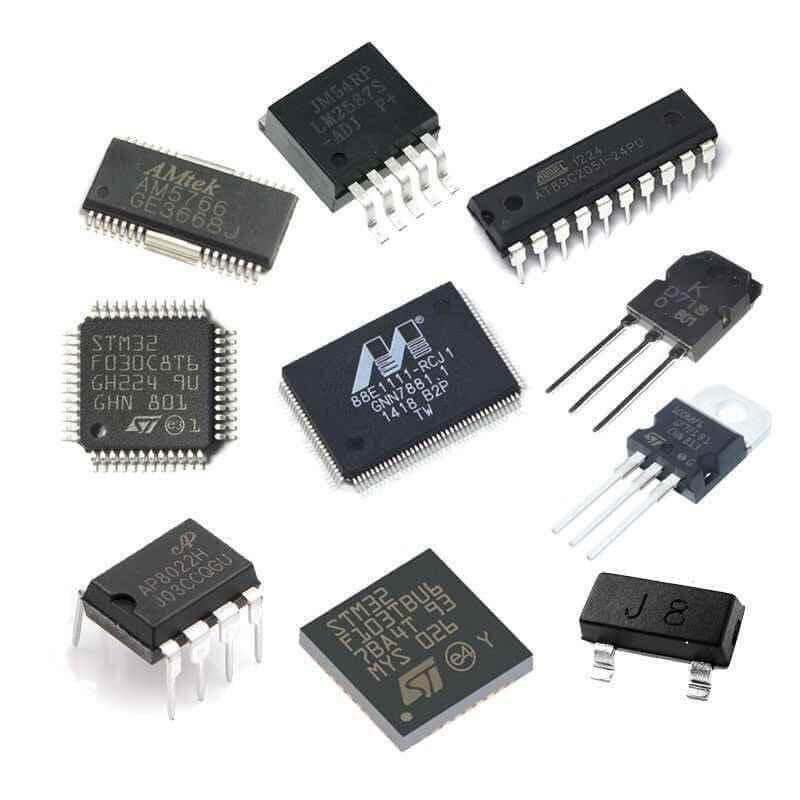What Is A CMOS Inverter?
 LoveChip
LoveChipTable of contents

A CMOS (Complementary Metal-Oxide-Semiconductor) inverter is a basic component frequently used in digital circuits, mainly for implementing the NOT logic function. It consists of a pair of complementary P-type and N-type MOSFET transistors. The CMOS inverter is popular in digital system designs, computer processors, communication circuits, and various electronic devices due to its low power consumption, high noise margin, and ease of integration into large-scale integrated circuits.
Working Principle
The operation of the CMOS inverter is based on the switching characteristics of MOSFETs. When the input signal is low (close to ground potential), the NMOS transistor turns off (as its gate voltage is lower than its source voltage, forming a reverse bias), while the PMOS transistor turns on (as its gate voltage is near the power supply voltage, forming a forward bias). This allows current to flow from the power supply through the PMOS to the ground, producing a high output. Conversely, when the input signal is high (close to the supply voltage), the PMOS transistor turns off, and the NMOS transistor turns on, allowing current to flow from the ground through the NMOS to the power supply, resulting in a low output.
Component Parameters
The CMOS inverter circuit consists of two transistors connected as follows:
· PMOS: The gate is connected to the input, the source is connected to the power supply voltage (VDD), and the drain is connected to the drain of the NMOS and acts as the output.
· NMOS: The gate is connected to the same input as the PMOS, the source is connected to ground (VSS), and the drain is connected to the drain of the PMOS.
The input controls both gates, while the output is taken from the shared drains of the transistors.
Characteristics
· Low Power Consumption: The CMOS inverter consumes almost no power in its static state; only during input signal transitions will there be brief power consumption. This characteristic significantly reduces overall power consumption in large-scale integrated circuits.
· High Integration: The CMOS inverter has a simple structure, takes up minimal space, and can be highly integrated into chips. With layout design and process optimization, higher integration and denser device arrangements can be achieved.
· Propagation Delay: The signal propagation time from input to output depends on the switching speed of the MOSFET and the parasitic parameters of the circuit.
· Noise Tolerance: CMOS inverters have high noise tolerance since switching only occurs when the input voltage is close to half of the supply voltage. This helps reduce the impact of noise on circuit operation.
· Good Interference Resistance: The complementary structure of the CMOS inverter means that both complementary transistors jointly control the response to input signals. This structure effectively resists external noise and interference signals, providing stable and reliable output results.
· Wide Input Voltage Range: CMOS inverters support multiple input voltage standards, such as TTL, CMOS, and LVCMOS, making them highly compatible.
Applications
The CMOS inverter is the foundation for constructing more complex digital logic circuits, such as logic gates, flip-flops, and registers. By combining multiple CMOS inverters in series, parallel, or with other logic gates, functions like AND gates, OR gates, NOT gates, XOR gates, and others can be realized. They are widely used in microprocessors, microcontrollers, memory, and various digital electronic devices. Additionally, CMOS inverters are often used for clock signal transmission, driving, and as buffer amplifiers.
FAQ
What is a CMOS inverter? A CMOS inverter is a logic circuit that inverts the input signal using complementary PMOS and NMOS transistors.
What are the benefits of a CMOS inverter? It has low power consumption, high noise tolerance, and is easy to integrate into large-scale circuits.
What are the disadvantages of a CMOS inverter? It consumes more power during switching and can have propagation delays.
Why is the CMOS inverter preferred? It is preferred for its energy efficiency, scalability, high noise immunity and reliable performance in digital circuits.
Where are CMOS inverters commonly used? They are widely used in digital logic circuits, including microprocessors, microcontrollers, memory devices, clock signal transmission, and as buffer amplifiers. They are the building blocks for more complex circuits such as AND, OR, and XOR gates.
Subscribe to my newsletter
Read articles from LoveChip directly inside your inbox. Subscribe to the newsletter, and don't miss out.
Written by

LoveChip
LoveChip
LoveChip Semiconductor is a leading electronic components distributor, renowned for its comprehensive one-stop procurement platform. This platform simplifies the sourcing of high-quality electronic components, integrating sourcing, logistics, and payment processes to provide a seamless and efficient experience for clients. In the pursuit of product quality, LoveChip has always insisted on using top-notch equipment and strict quality control processes to ensure that every product meets high-standard quality requirements.